Did you know that only 1% of the corn grown in Iowa is sweet corn?
The other 99% is field corn which is used to make various food items, animal feed, fuel and other products we use nearly every day.
I learned all about that and more when I had the opportunity to join the Iowa Corn-Fed Tour with some other food bloggers earlier this month.
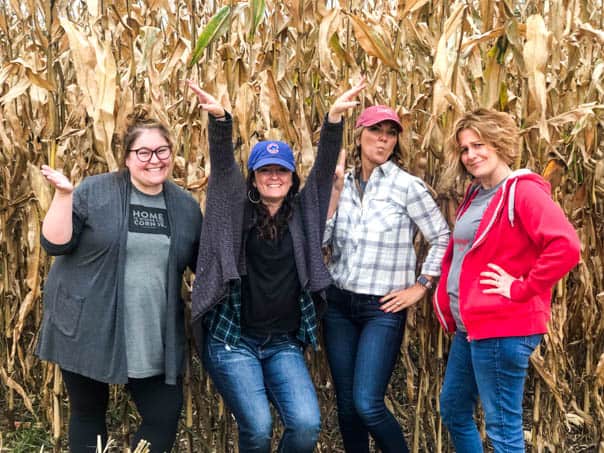
The best part, I was able to meet incredible people who make corn their life.
I am proud to be partnering with Iowa Corn to bring you this post and share with you all that I’ve learned on my recent trip to Iowa. As always, all opinions are 100% my own.
I’ve been to Iowa a few times since I’ve started blogging.
And I seriously am in love with the state – it’s farmers, scenery and abundant cornfields!
Until I went on this trip though, I had absolutely no idea how important this crop is to our everyday life.
It’s another source of food that I have taken for granted.
SAVE THIS BEAUTIFUL IOWA CORN TO YOUR FAVORITE PINTEREST BOARD!
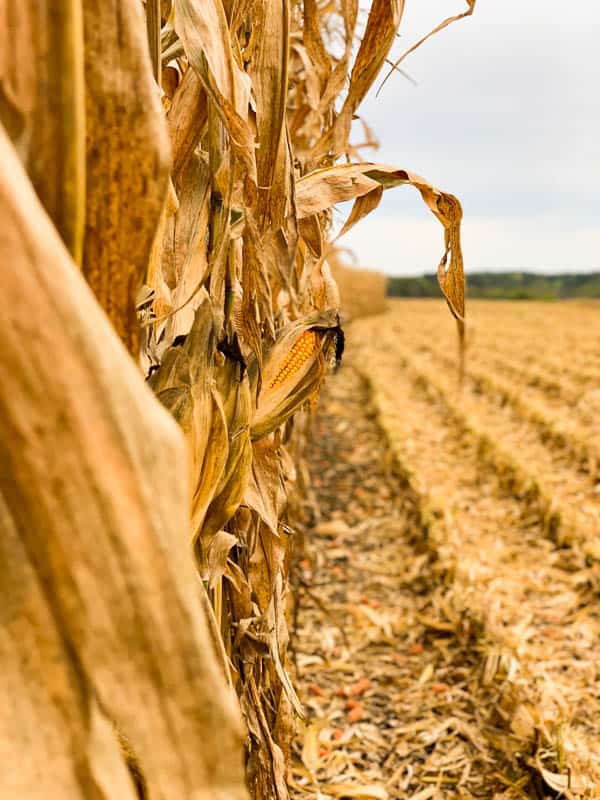
Iowa Distilling Company –
On our first night in Iowa, we had the pleasure of going to the Iowa Distilling Company for dinner catered by Cyd’s Catering. While there we talked with Gary Petersohn and his wife, Teena about the farming they’ve been doing over the past 50 years.
We also enjoyed some cocktails with bourbon and whiskey made at the distillery.I enjoyed the Distillery’s Cider Fire (pictured below). It was delicious! The drink was made with their Prairie Fire Cinnamon Whiskey.
Did you know?
Whiskey is made from a blend of fermented grains? It is called a “mash bill” which is comprised of corn, barley, rye, and wheat.
Whiskey officially becomes a Bourbon when the mash bill is comprised of at least 51% corn.
Who knew? Not me, that’s for sure!
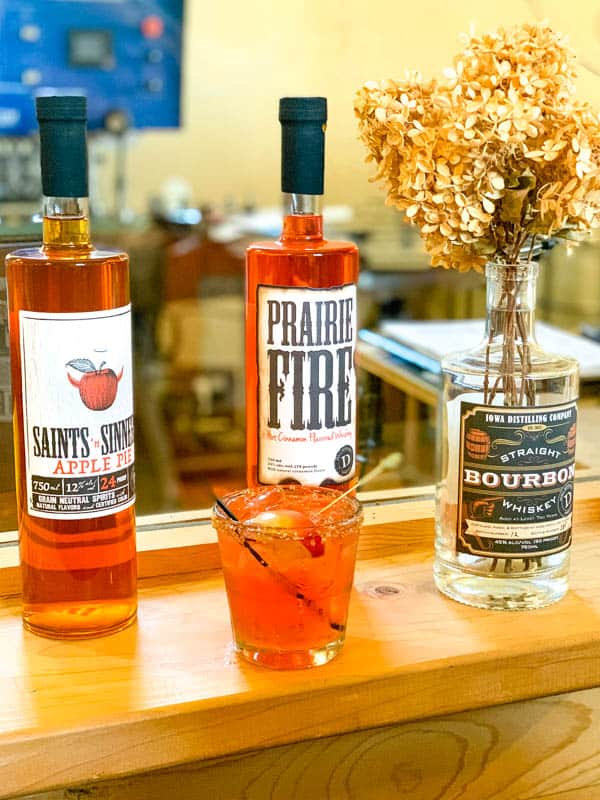
American Lung Association –
We enjoyed a lunch and a conversation with Angela Tin from the American Lung Association.
She explained to us that mobile sources of air pollution are the most dangerous, and it is where we need to see the most improvements.
This pollution largely comes from exhaust and the refilling at service stations.
These air pollutants are asthma triggers, and asthma is an extremely serious lung condition.
Yet, bad air quality affects everyone and what we can’t see hurts us the most.
It’s the little particles that are the most dangerous.
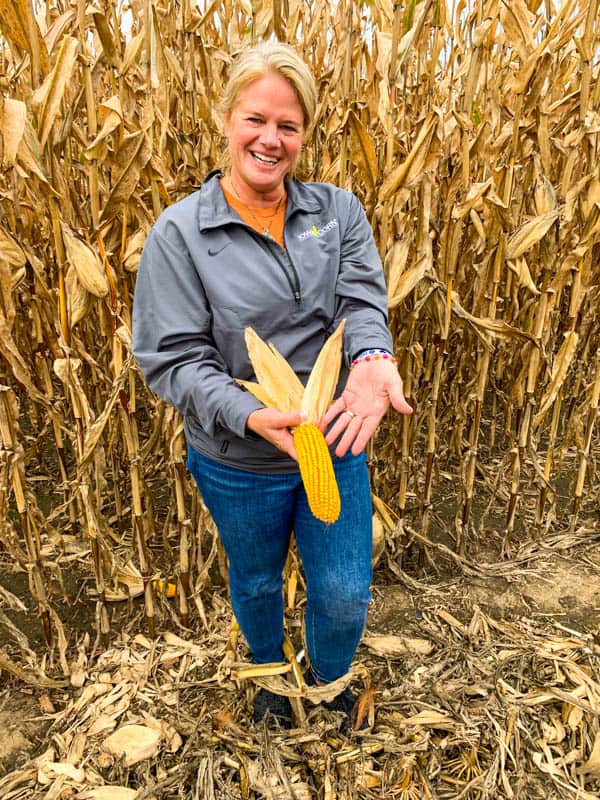
How are corn and air pollution related?
Field corn is used to make ethanol which is a Flex Fuel.
If we all make a conscious choice to use the 10% ethanol blend gasoline found at the gas stations throughout the United States, we can improve our air and make it cleaner.
Steve Kuiper –
Steve is a 4th generation farmer on his century-old farm in Marion County, Iowa.
His favorite part of farming is the planning and harvesting.
Every year he wants to improve his farm so that he can provide consumers with the best quality product. Therefore, he uses less insecticide by choice.
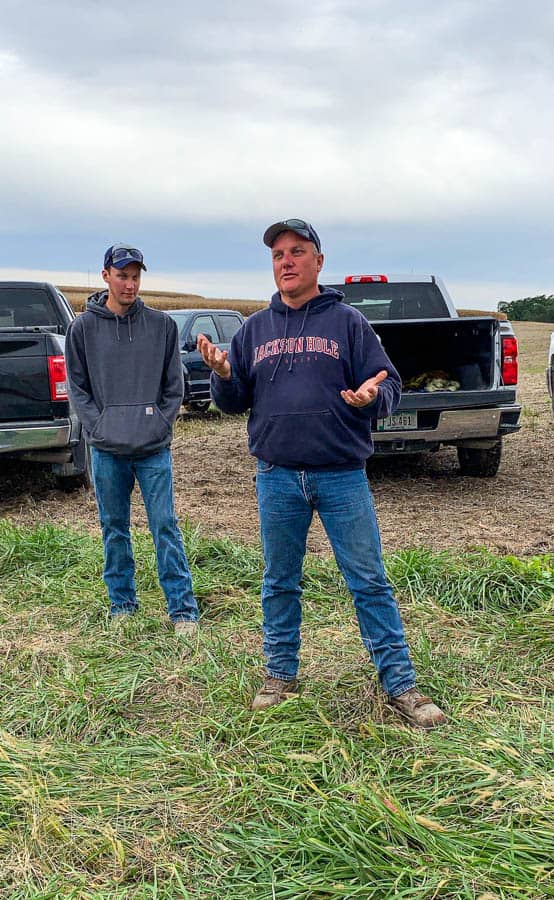
He wants people to understand that they’re being the best stewards they can while at the same time being the most profitable.
Steve’s desire is to make the farm better for his sons, therefore making it more sustainable.
When is corn ready to harvest?
As a whole, corn farmers can tell if their crop is ready to harvest largely based on the picture below.
See the corn standing up on the stalk? That means it’s still wet.
If the corn has dropped like one in the forefront then it’s dry and ready for harvest.
The dropped corn will take less time to dry which means less time in the dryers, and less gas the farmers have to pay for.
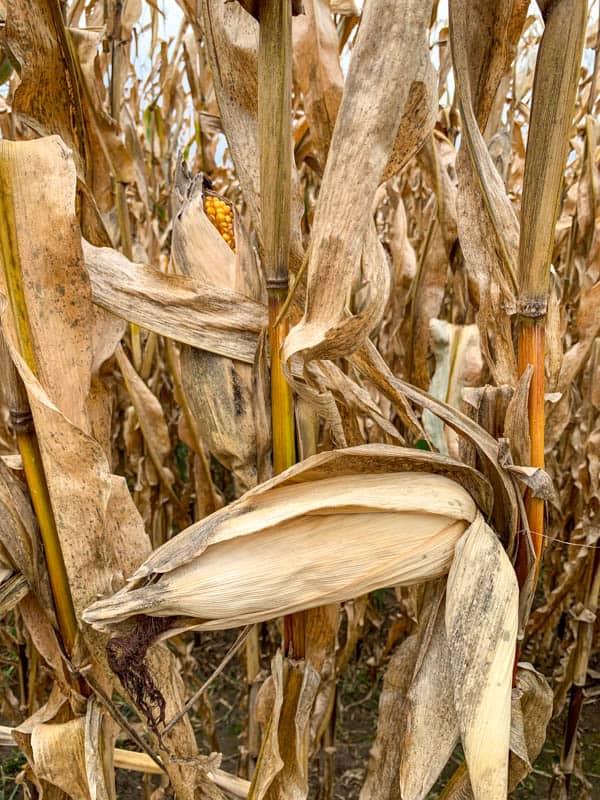
Steve uses grid sampling so that he knows the fertility of each area, enabling him to plant different corn seeds for different soil types.
He is also a big proponent of no-till farming which minimizes erosion, and leaves residue of the previous crop after harvest.
This makes the soil the best it can be both for profitability as well as for years to come for sustainability.
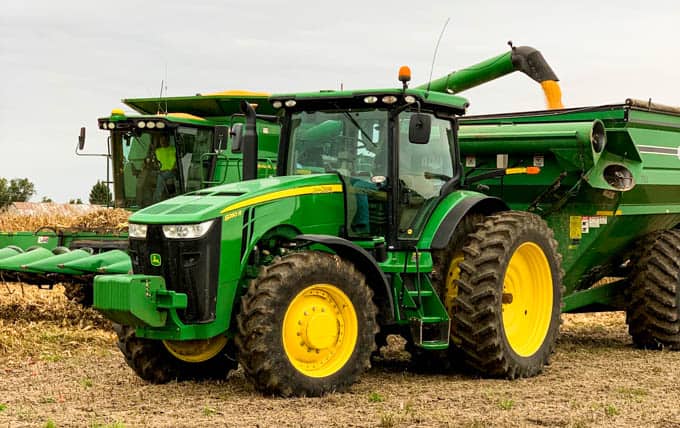
Dr. Ruth MacDonald, PhD, RD –
On the last day of our trip, we had the pleasure of talking to Dr. Ruth MacDonald. She is a Professor and the Chair of the Department of Food Science and Human Nutrition at Iowa State University College of Human Sciences.
Dr. Ruth explained to us that there is a general skepticism about science, and that people need to take into consideration that agriculture is a business.
When discussing GMO’s, she said there have never been any diseases associated with GMO crops.
We all have to be aware that everyone has an agenda. Therefore, the consumer looking for information, must be wary of many internet sites as they might be funded by companies and/or food boards looking to sway our opinion.
Some of the unbiased sites she recommended are Best Food Facts and GMO Answers.
If you’re interested, you can also go to the National Academy of Sciences and download the GMO report.
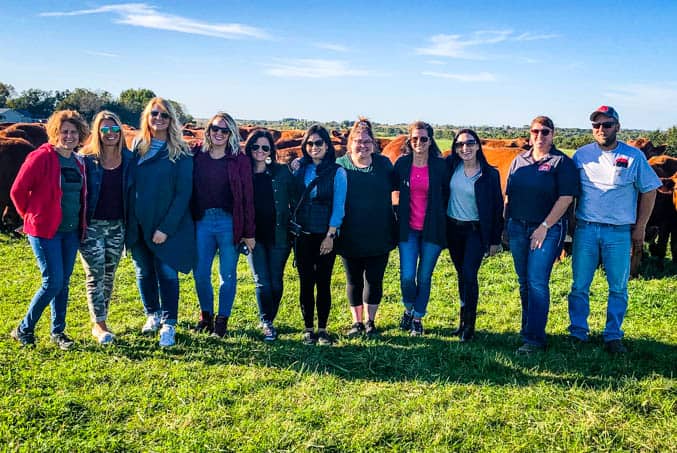
Dr. Ruth also emphasized that organic and conventional food suppliers need to come together so that everyone can afford to have a good nutritional diet.
I couldn’t agree more!
Science is always changing and always making improvements.
This means we can be confident that we’ll continue to provide our families with food that will both nourish and sustain them.
I am so very grateful to Iowa Corn for providing me with the opportunity to meet more incredible farmers.
Every farmer we met emphasized the importance of environmental stewardship and how important it is to them that they provide consumers with the best product possible while at the same time they improve their soil for sustainability.
They and many others are the backbone of America. For without farms there would be no food.
Keep an eye out for more corn related recipes as well as more insights on this incredible crop to come in the next few weeks!

Comments & Reviews
Wow! I wish I could come there! Thank you for sharing the fun experience.
Thank you for sharing the fun experience.